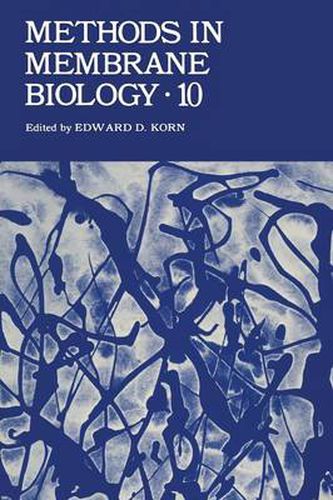Readings Newsletter
Become a Readings Member to make your shopping experience even easier.
Sign in or sign up for free!
You’re not far away from qualifying for FREE standard shipping within Australia
You’ve qualified for FREE standard shipping within Australia
The cart is loading…






This title is printed to order. This book may have been self-published. If so, we cannot guarantee the quality of the content. In the main most books will have gone through the editing process however some may not. We therefore suggest that you be aware of this before ordering this book. If in doubt check either the author or publisher’s details as we are unable to accept any returns unless they are faulty. Please contact us if you have any questions.
Three articles make up Volume 10 of Methods in Membrane Biology. In the first of these, Papahadjopoulos, Poste, and Vail extensively review much of the available data on the fusion of natural membranes, model membranes (liposomes), and natural membranes with liposomes. The authors are led by their review of the experimental methods and their interpretations of the results obtained to a general theory of membrane fusion which they believe is applicable to all systems that have been studied. Arguing that although protein and carbohydrate may serve, in some cases, to bring membranes into sufficiently close proximity for fusion to occur and, in other cases, to remove peripheral and integral proteins from the regions that are to undergo fusion, the authors conclude that membrane fusion per se is solely a property of the lipid bilayer. In their view, all the experimental observations to date can be subsumed under a unifying hypothesis in which membrane fusion is the result of a phase separation in one-half of the membrane bilayer brought about by the interaction - of calcium ions with acidic phospholipids, mostly phosphatidylserine. Where half-membranes already contain sufficient acidic phospholipids, a local increase in calcium ion concentration may suffice to induce fusion (examples might include exocytosis and fusion of intracellular membrane systems). In other cases, natural or experimentally induced events preceding fusion might be necessary to increase the local concentration of the acidic phospholipids in the half-membrane (virus-or fusogenic agent-induced cell-to-cell fusion, or endocytosis, for example).
$9.00 standard shipping within Australia
FREE standard shipping within Australia for orders over $100.00
Express & International shipping calculated at checkout
This title is printed to order. This book may have been self-published. If so, we cannot guarantee the quality of the content. In the main most books will have gone through the editing process however some may not. We therefore suggest that you be aware of this before ordering this book. If in doubt check either the author or publisher’s details as we are unable to accept any returns unless they are faulty. Please contact us if you have any questions.
Three articles make up Volume 10 of Methods in Membrane Biology. In the first of these, Papahadjopoulos, Poste, and Vail extensively review much of the available data on the fusion of natural membranes, model membranes (liposomes), and natural membranes with liposomes. The authors are led by their review of the experimental methods and their interpretations of the results obtained to a general theory of membrane fusion which they believe is applicable to all systems that have been studied. Arguing that although protein and carbohydrate may serve, in some cases, to bring membranes into sufficiently close proximity for fusion to occur and, in other cases, to remove peripheral and integral proteins from the regions that are to undergo fusion, the authors conclude that membrane fusion per se is solely a property of the lipid bilayer. In their view, all the experimental observations to date can be subsumed under a unifying hypothesis in which membrane fusion is the result of a phase separation in one-half of the membrane bilayer brought about by the interaction - of calcium ions with acidic phospholipids, mostly phosphatidylserine. Where half-membranes already contain sufficient acidic phospholipids, a local increase in calcium ion concentration may suffice to induce fusion (examples might include exocytosis and fusion of intracellular membrane systems). In other cases, natural or experimentally induced events preceding fusion might be necessary to increase the local concentration of the acidic phospholipids in the half-membrane (virus-or fusogenic agent-induced cell-to-cell fusion, or endocytosis, for example).